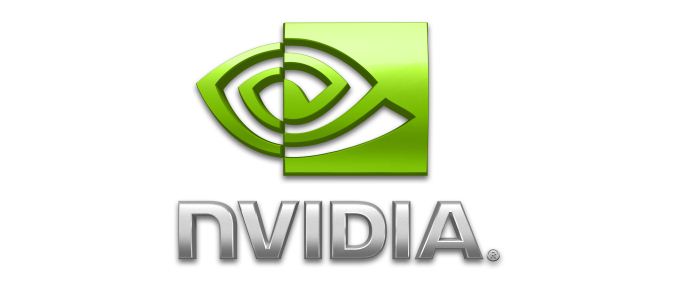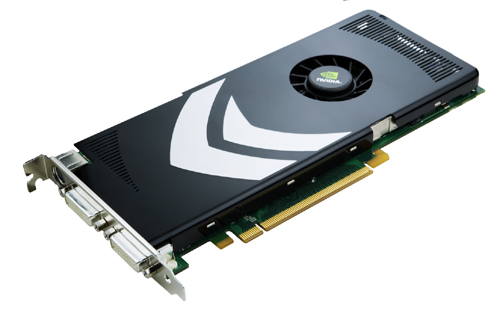NVIDIA Announces Legacy Support Plans For D3D10 Generation GPUs
by Ryan Smith on March 12, 2014 3:04 PM EST
All good things must come to an end, and for NVIDIA’s Direct3D 10 generation GPUs that end is just about here. NVIDIA has posted a document to their support website this week announcing their plans to drop driver support for their D3D10 GPUs, and how future support for those products will work.
With the forthcoming Release 340 driver set NVIDIA will be moving their D3D10 GPUs to legacy status, which will make R340 the final driver branch to support these products. The branch after R340, R343, will drop support for D3D10 GPUs, leaving Fermi, Kepler, and the new Maxwell as the only GPU families supported in newer driver releases.
As for R340 and their D3D10 GPUs, while the move to legacy status means that these GPUs will no longer receive performance optimizations and new driver features, NVIDIA does leave the door open to further bug fixes with further R340 releases. Officially R340 will support these GPUs until April 1, 2016, so NVIDIA is planning on continuing to support these products in some fashion up until then. But it’s worth noting that legacy products aren’t on a planned driver update schedule like current generation products are, so bug fix drivers are issued on an as-needed basis. For comparison, NVIDIA’s DX9 GPUs, which went legacy back in October of 2012, have received a driver update as recently as February of 2013.
Meanwhile it’s worth pointing out that this move to legacy status will be for all of NVIDIA’s product lines using these GPUs: GeForce, Quadro, and Tesla. So along with GeForce cards ranging from the GeForce 8800GTX to the GeForce 405, the move to legacy will also impact NVIDIA’s first-generation Tesla 1000 parts, the Quadro FX series, and more. The extensive list of affected products can be found in NVIDIA’s announcement.
On a tangential note, compared to NVIDIA’s legacy D3D9 products it looks like NVIDIA’s D3D10 products will have received roughly the same length of mainstream support. With GeForce 8800GTX turning 8 this year and GeForce 405 turning 4, NVIDIA’s D3D10 products have been supported for between 4 and 8 years. This is about a year less than D3D9 on the low end and roughly the same length of time on the high end. Unsurprisingly, those products from earlier in the generation have received a longer period of support overall, due to the fact that NVIDIA retires products whole generations at a time.
Wrapping things up, today’s retirement announcement means that D3D10 GPUs as a class are just about at the end of their lives. With AMD having moved their D3D10 GPUs to legacy status back in 2012 and now NVIDIA in 2014, both of the major dGPU vendors have put their pre-D3D11 products out to pasture. This leaves Intel as the only vendor with D3D10 parts still receiving mainstream support, as Intel did not gain support for D3D11 until Ivy Bridge in 2012.
As such it will be interesting to see how forthcoming game development is impacted by this. With D3D10 GPUs now existing as legacy products, and with the current-generation game consoles being D3D11 based, will developers as a whole continue to support D3D10 GPUs after 2014? We will have to see what the future brings.
Source: NVIDIA (via SH SOTN)











33 Comments
View All Comments
blanarahul - Wednesday, March 12, 2014 - link
Introducing TechReport subscription!edzieba - Wednesday, March 12, 2014 - link
From the out of support list: "NVS 295, NVS 300"Ding dong the witch is dead! Now there's half a chance I can persuade Upstairs to have the damn passively-cooled fail-o-matics yanked from all our chassis and replaced with actively-cooled cards (or at least kick them out for the next OOW & upgrade cycle). Sure, they're fine if you have the airflow I guess, but whoever specced our workstations for the last rollout didn't check that first.
Kevin G - Wednesday, March 12, 2014 - link
Indeed. I see a couple of these units at work and hoping to some nice low power, passive Maxwell cards as a replacement. Don't need much power but I'd love the nice multimonitor support. Hopefully the maximum number of displays has increased and there is support for MST hubs. I have a reason to test a setup with 8 displays and running them all off of one video card/system would greatly simplify things.Ryan Smith - Wednesday, March 12, 2014 - link
Maxwell is still limited to 4 displays per GPU.Mr Perfect - Thursday, March 13, 2014 - link
Matrox has M-series cards capable of 8 displays each, if you don't want to have two normal cards in a system for some reason.Kevin G - Friday, March 14, 2014 - link
Mirroring across two cards has been flaky in my experience which is necessary in the setup. While true that I could just have all the mirrored displays connected to a single card, it quickly becomes a pain to support if you have to troubleshoot remotely and have to have some one else be your hands if necessary.I was hoping that with both nVidia and AMD pushing multimonitor setups as well as 4K, the number of logical displays their cards would increase. I'd be content if this required MST hubs as large multi-display setups are rather niche.
jasonelmore - Wednesday, March 12, 2014 - link
This will cause Minimum System requirements to go up in some games since drivers wont be updated with new game profiles. Nearly every AAA game has the 8800GT w/ 512GB as the minimum GPU.inighthawki - Wednesday, March 12, 2014 - link
That depends on how you define "up." There are plenty of newer cards on the market with the same performance. The 8800 line just happens to be incredibly popular, so it's a good "target."DanNeely - Wednesday, March 12, 2014 - link
What's actually likely to start pushing min specs up will be when cross platform titles start dropping the PS3 and XB360 because supporting really old/slow PC cards was doable using the quality level that was already created to support the last generation consoles.tipoo - Wednesday, March 12, 2014 - link
I have to hand it to them, this is only happening now, while AMD already isn't supporting the HD4000 DX10.1 series in Windows 8.1.